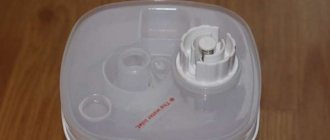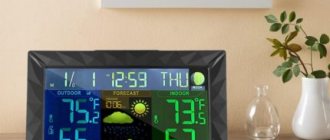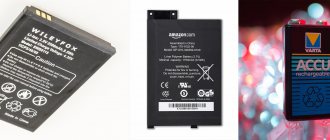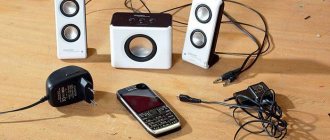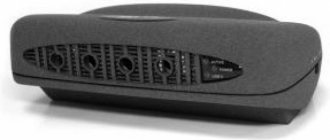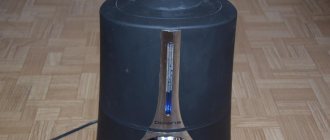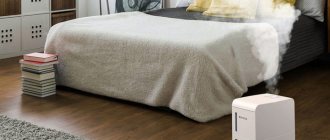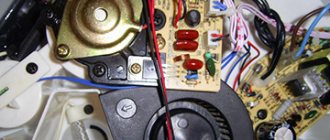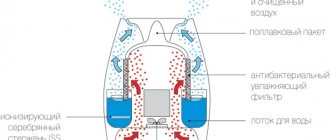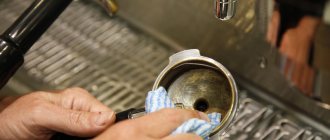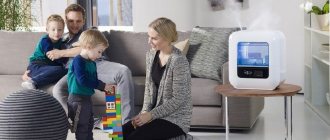An air humidifier is a useful device for maintaining an optimal microclimate in the apartment. It is especially necessary in the cold season, when central heating makes the air in the room dry. When in contact with water during operation, the device becomes dirty and covered with bacterial plaque. To clean your humidifier, you don't have to take it to a workshop. It is quite possible to do this with your own hands. To remove scale and mucus accumulated inside it, both professional and folk remedies are used.
Types of Humidifiers
Manufacturers offer several types of devices to improve the microclimate. The following options can be purchased:
- cold humidification device (produces cold steam);
- hot humidification device (with hot steam);
- ultrasonic humidifiers (an ultrasonic element turns water into dust).
In order for the device to function fully, it needs periodic cleaning.
Cleaning procedure
Scale is a dense mineral deposit that forms on the side surfaces of the tank. To clean a household humidifier from deposits, you need to do the following:
- Turn off the device. Remove the tank from the base and disassemble it into elements.
- Free it from water and rinse.
- Treat the inner surface with a cleaning compound. Use a soft sponge to remove softened scale.
- Wipe the outer part of the body with a flannel soaked in diluted table vinegar (3%).
In ultrasonic humidifiers, you need to clean the membrane surface with a special brush. It is included in the package.
Cleaning procedure
The first step is to choose a cleaning product. It is not recommended to use household chemicals for treating bathroom surfaces, as well as dishwashing detergents. They are too aggressive towards the material from which the humidifiers are made. In addition, during operation, residues of such products can become airborne, which can lead to poor health of the inhabitants of the house or even serious harm to health.
To clean white deposits, it is best to choose regular soap or vinegar. When using the latter, it is also important to prevent particles of the product from remaining in the mechanism; this will ensure at least an unpleasant odor during operation. Some manufacturers recommend using specialized tools - this is individual for each model; usually this information is indicated in the instructions. To clean the Benco , for example, a special mixture is used.
You also need to know how to clean a particular element.
Cleaning the humidifier is as follows:
- To remove scale from a humidifier, you need to prepare a solution of water and soap. It is best to use ordinary household items as it is the safest. Soap is mixed with water and shaken until foam forms. The resulting solution is applied to the surfaces of the device, then they are wiped with a soft cloth or brush.
- In order to clean the tank from white deposits, you need to apply a soap solution to a cloth and carefully wipe all accessible surfaces. You can also use a toothbrush for cleaning; it is important that it is soft. Hard bristles may scratch the surfaces of the device.
- If you need to get rid of hard crust in the tank, you need citric acid, soda or vinegar. Trying to remove it manually is dangerous for the mechanism. Any of the listed substances is diluted in water, the resulting solution is poured so that it occupies the entire volume of the tank. Before you remove the scale, you need to let it soften. This takes about an hour.
- To clean the nozzle, it is best to use vinegar and water in a one-to-one ratio.
- All elements of the mechanism that have been cleaned should be thoroughly washed.
IMPORTANT! There should be no detergent particles left on the surfaces. Therefore, it is recommended to wash as thoroughly as possible. You should clean the humidifier carefully, because the surfaces of the device are very sensitive and can easily be scratched or damaged, even breaking.
Recommendations on how to wash a humidifier can be found in the instructions. These may vary depending on the model, since each type and brand of humidifier differs in operating principle and design. For example, individual parts of an ultrasonic device can be cleaned with the included accessory.
The rules for cleaning ultrasonic humidifiers are different: a solution of water and vinegar (soda, citric acid of your choice) is poured into the tank and left to settle for at least twelve hours. Washing by hand is not recommended.
The humidifier also requires preventive disinfection - chlorine is used for this. It is important to rinse the humidifier so that the smell of the product is not noticeable during use.
This is interesting: Mold in the refrigerator: what to do, how to get rid of the smell?
Cleaners
To clean the air humidifier from any dirt and scale, you can use both professional and improvised methods.
Professional
When choosing special tools, the following characteristics are taken into account:
- effectiveness against mold fungi and bacteria;
- level of danger for humans and domestic animals;
- scope of application - it is better to choose universal ones.
Advice! Some professional formulations contain silver. Such cleaning products destroy any pathogenic microflora and prevent the spread of viruses. They do not contain fragrances, chlorine, or toxic components that cause irritation to the respiratory tract.
To clean your home humidifier, you can use the following:
- "Silvester" (spray). The device must first be descaled with a sponge, and then the cleaned surface must be treated with the composition. Allow the product to dry naturally, wipe with a dry cloth.
- "SumerSil". Before use, the concentrate is diluted with water in accordance with the instructions.
- "Bacillol AF". Clears scale very quickly. Does not contain formaldehyde or fragrances. The product must not be used for filters. Available in 100 ml bottles with convenient dispensers. To clean the device, simply wipe it with the prepared solution inside the tank. No rinsing is required. It is enough to wipe the walls with a soft sponge.
- "Surfacesafe". Sold in 750 ml bottles. They can clean surfaces made of any materials. It is odorless, contains no hazardous substances, leaves no streaks and removes all microorganisms. Does not destroy rubber, aluminum and acrylic. A two-minute exposure is sufficient for complete disinfection.
- "Surfanios lemon fresh." There are no aldehydes or phenolic compounds in the composition. Approved for cleaning metal, plastic and rubber surfaces. Does not leave stains and does not require rinsing. Removes plaque in 5-7 minutes, prevents the proliferation of mold fungi.
Folk
It is good to clean the walls of the humidifier from a layer of scale using traditional methods. Soft plaque can be easily removed with a sponge and in most cases does not require the use of serious “chemistry”.
The selected product is diluted with water, poured into a tank and left until the resulting scale dissolves. You can use aqueous solutions of vinegar, soda and citric acid.
Vinegar
Lime deposits regularly form on the surface of the humidifier nozzle. It can be cleaned with 9% vinegar.
Attention! You cannot clean with concentrated products, as they can render the nozzle unusable.
Usage diagram:
- Soak a soft cloth in the vinegar solution.
- Wipe the nozzle.
- Fill the humidifier reservoir with water and turn it on.
If you also need to clean the tank itself, then fill it with warm water with the addition of 0.5 tbsp. 9% vinegar, turn on and leave to work for 60 minutes. This will not only remove scale, but also clean the device from mold and microorganisms. The procedure should be carried out outdoors or near a window.
Soda
To clean a humidifier at home, you can use regular baking soda. The procedure is allowed to be performed indoors.
To do this, fill the tank with warm water and dissolve 60 g of soda in it. Stir the solution and activate the device for 1 hour. There will be enough time for the scale to completely remove.
You can clean any parts of the device with baking soda. It also has a disinfecting effect.
Lemon acid
Citric acid will help clean the parts of the device from a dense layer of scale. Mode of application:
- Stir 4 tbsp in 200 ml of warm water. l. acids.
- Pour the resulting solution into the tank.
- Activate the device. Time – 60 min.
Clean the unit using citric acid outdoors. If it is not possible to take the device outside, then it should be placed near an open window and the “spout” should be pointed outward.
Descaling humidifiers
How to clean an air humidifier from scale is a question asked by owners of air humidifier devices of any operating principle. However, you should know that specific care and washing methods should be applied to each type of device. As a rule, they are always described in detail in the instructions for the devices. However, there are some general basics for cleaning humidifiers:
- Regular cleaning of the water tank. At the same time, it is not recommended to use a cleaning agent - this is harmful both for the device itself and for people who will subsequently breathe the humidified air. Most often it is recommended to wash the tank with a soap solution, for which you should use laundry soap. Important: you need to wash the tank either with a piece of soft cloth or a soft toothbrush. You should not use abrasive materials in any way, as they can damage the device.
- Regular cleaning of the nozzle (membrane), if any. For this purpose, either a solution of laundry soap or a weak vinegar solution can be used to remove soft plaque. In particular, it is recommended to take 50 ml of vinegar per 1 liter of water for effective cleansing.
- Removing old scale with a special cleaning solution. Regular citric acid is suitable for this - 2 tbsp is enough. spoons per 1 liter of water. When the acid is completely dissolved, fill the reservoir with the solution. Usually a few hours are enough, but in very advanced cases you can leave the tank to soak for the whole night. After this procedure, even the most stubborn plaque is easily removed. When cleaning steam humidifiers in this way, they must be turned on in operating mode, and therefore it is best to carry out this procedure on the balcony.
- Use of special cleaning products recommended by manufacturers of air humidification devices. Most often, such products can be purchased immediately when purchasing a humidifier.
We recommend that you read: Fragrance for air humidifier
How to disinfect a humidifier?
Disinfecting the humidifier helps destroy pathogenic bacteria. The procedure must be carried out once every 14 days. For disinfection, you do not need to purchase additional compounds; the simple and accessible components available in the house will be sufficient.
White
For 1.1 liters of cool water, take 6 ml of chlorine bleach. Fill the reservoir with the solution and wait 60 minutes. There is enough time for complete disinfection. If you leave the solution longer, it can cause cracking of the tank walls.
Advice! To remove the bleach aroma, fill the humidifier reservoir with clean water and activate it. When steam formation begins, turn off the power to the device and pour out the water. Repeat steps until the bleach smell is completely eliminated.
Hydrogen peroxide
Pour 500 ml of the drug into the reservoir, wait 60 minutes. Then drain the peroxide and rinse the tank with clean water. There is no need to worry that particles of peroxide will remain on its internal surfaces. During evaporation, the remaining composition will disintegrate into oxygen molecules and water.
Table vinegar
Vinegar not only dissolves scale, removes fungi and mucus, but also helps disinfect the device. Dissolve 260 ml of product in 4.5 liters of water. Fill the tank and turn on the device for 1 hour. Cleaning should be done outdoors. After disinfection is completed, discard the liquid. Fill the humidifier tank with clean water. Let it run until steam forms. After this, drain the liquid again.
Descaling
To make the air humidifier suffer less from hard deposits and biocontaminants, pour water purified by a household filter or boiled into it. It is much softer than tap water and contains fewer harmful microorganisms. As a result, the operation of the device is simplified.
To clean the humidifier from deposits, perform the following steps:
- Disconnect the device from the network and remove the water tank.
- As far as possible, disassemble the device into its component parts.
- Pour out the remaining water from the tank and rinse it well with tap water.
- The outer part of the body is wiped with a rag soaked in table vinegar. This will prevent rapid contamination and dust settling.
Cleaning the membrane and filters
To clean the membrane of the ultrasonic device, use a special brush. It is usually included as an accessory. If such a brush is not included, you can clean the membrane with a soft sponge or piece of fleece fabric.
Filters for humidifiers in most models are consumables and must be replaced every 3 months. But this does not change the fact that they also need to be cleaned. To do this, just rinse the filter under running cool water and leave it to dry on a towel.
Important!
Do not use aggressive chemicals to clean the filter. They destroy the part. If chemical residues get into the sprayed liquid, they cause headaches and allergies.
Use of special cleaning agents
The inner surface of the tank is washed with a soft cloth. No hard brushes should be used to remove scale. They scratch the surface, so deposits then accumulate faster. To wash the tank, use liquid soap or prepare a solution by beating shavings from laundry soap into a foam with warm water.
The walls of the tank are washed, removing soft deposits with a damp cloth. To clean tight spaces, use an old toothbrush with soft bristles. Do not rub the device too hard to avoid leaving scratches. Hardened deposits are removed with special products designed for descaling teapots. It is diluted with water and used according to the instructions. If you don’t have such a drug at hand, you can use traditional cleansing methods.
Cleaning the tank with table vinegar
To begin, wipe the nozzle of the device with vinegar diluted in half with water. In this way, accumulated dirt and soft plaque are removed.
Then prepare a solution to clean the water tank. To do this, you will need water in a volume equal to the capacity of the tank, and 0.5 cups of vinegar with a concentration of 9%. The liquid is poured into the reservoir and the device is turned on for 30 minutes. During this time, all deposits soften and are then easily washed off. If it was not possible to clean the device from dirt the first time, repeat the procedure.
Application of citric acid
This product is also good at removing hard deposits on the surface of the tank, like citric acid.
To prepare a cleaning solution, dissolve 4 tbsp in the required volume of water. l. citric acid powder. The liquid is poured into the tank and the device is turned on for 1 hour. Under the influence of the cleaning solution, solid plaque particles soften and peel off. Then they are easy to remove and rinse the tank under running water. Important!
When using vinegar or citric acid as a cleaning agent, do not allow evaporating steam to enter the room. Therefore, it is better to carry out the procedure outside or on the balcony. If this is not possible, then the spout of the device must be directed so that the steam exits out the window.
Cleaning with soda
Unlike vinegar or citric acid, the evaporation of water along with baking soda particles is not dangerous to humans. Therefore, in some cases it is used as a cleaning agent. To do this, add 4 tbsp to the water. l. baking soda and mix thoroughly until the powder is completely dissolved. The liquid is poured into the tank and the device is turned on for 1 hour. After this, the softened plaque particles are washed with running water.
4
Useful tips
Cleaning and disinfection of the device must be carried out regularly . It is recommended to wash it every three days and disinfect it once every three weeks. To prevent the formation of limescale, it is necessary to use distilled, bottled or settled water (it must be changed more often).
Water that remains in the tank for a long time not only leaves lime deposits on the walls, but also causes active growth of bacteria. It is necessary to promptly replace filters and cartridges in the device. Do not clean the membrane with a stiff brush that is not included with the device, otherwise it will be damaged.
It is not recommended to turn on the device at full power, as this will shorten its service life. After creating the optimal level of humidity in the room, you must turn off the device; it should not work continuously. High humidity creates a favorable environment for the spread of mold and bacteria.
Large amounts of contamination should not be allowed to appear. Only special chemical solutions and powders can remove thick limescale deposits. In advanced cases, a metal sponge can be used. In this case, there is a high probability of damage to the case, so you should not overuse such cleaning.
The device should only be used for its intended purpose. It is prohibited to add aromatic or essential oils, herbal decoctions, or use the device as an inhaler. This will cause the filters to become clogged and the device to fail.
If the humidifier is not used for some time, it is necessary to empty the water from it, rinse thoroughly and dry it. A faulty or outdated device should be replaced. It is recommended to buy a new humidifier after 5 years of use. An old device will do more harm than good.
Pollution prevention
In order for the unit to work for a long time and efficiently, it must be kept clean. To do this you need to follow simple rules:
- Timely care. The device must be disinfected every two weeks. This will prevent the proliferation of pathogenic microorganisms, which then enter the room and are inhaled by humans.
- Descaling. The tank must be cleaned of deposits every week. This will increase the life of the humidifier.
- If the means at hand are not effective and cannot cope with limescale, you must use professional compounds. The chemical components they contain will help clean the humidifier more effectively.
- To reduce scale formation, it is recommended to use filtered or boiled water.
- After turning off the humidifier, be sure to drain any remaining liquid. In stagnant water, the number of pathogenic microflora quickly increases, which then enters the air.
- When filling the tank, take into account the manufacturer's recommendations: it is forbidden to pour too little or too much water. This may cause the device to break down.
- It is necessary to monitor the condition of the parts, especially the membrane and filter. If they wear out, they must be replaced. Otherwise, the device will not work correctly and will eventually fail.
- It is not recommended to use a device with any defects. It's better to replace it with a new one.
